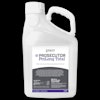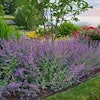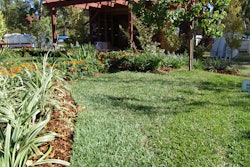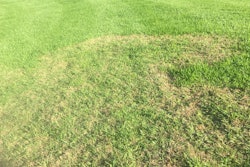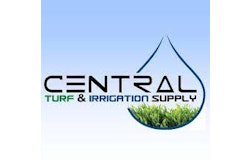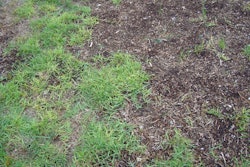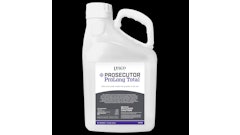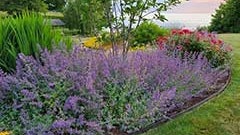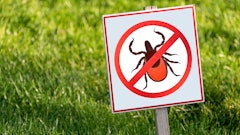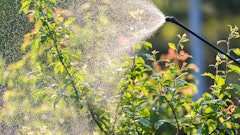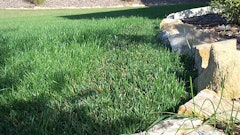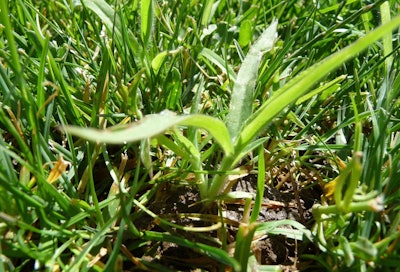
Now that lawn care operators have learned how to identify the top weeds for this summer, check out the advice below for how to prevent and eliminate them.
 CrabgrassSyngenta
CrabgrassSyngenta
Large crabgrass
Cultural prevention + control:
Crabgrass plants can be prolific seed producers and should be controlled before they set seed. A thick, dense lawn will help prevent weeds from easily spreading. Cultural practices that can inhibit or reduce crabgrass infestations include proper mowing height that increases the height of the turfgrass, aerification, proper fertilization and irrigation. If there are only a few instances of crabgrass plants, hand weeding can be used to manually remove plants. Care should be taken to limit the spread of seed from equipment or footwear by washing and cleaning equipment between sites. Since crabgrass is a summer annual, it will naturally die during the fall because it cannot survive a hard frost.
Chemical prevention + control:
Preemergent herbicides, such as those with active ingredient dithiopyr, pendimethalin or prodiamine, are used prior to weed germination to form a herbicide barrier near the soil surface, which controls crabgrass seedlings as they emerge. For preemergent herbicides to be effective, timing is critical. These products need to be applied prior to germination (prior to soil temperatures reaching 55 degrees F) and watered into the soil to be activated.
Postemergent herbicides are available for control of emerged crabgrass. The stage of weed growth may also influence the level of control. In general, the more mature the crabgrass is, the more difficult it can be to control. Generally, crabgrass is best controlled with postemergent herbicides when they are young plants, earlier in the season. Herbicides with the active ingredient mesotrione will control crabgrass at the four-tiller or less stage. Late-season postherbicide applications may not be necessary because of this, so timing of year is important when deciding to treat. Postemergent herbicides that are effective for crabgrass control include active ingredients such as quinclorac, dithiopyr, mesotrione and fenoxaprop. Postemergent herbicides will have a different spectrum of activity based on the size of the crabgrass present.
 Cloverstock.adobe.com - two K
Cloverstock.adobe.com - two K
Clover
Cultural prevention + control:
Clover species thrive in low-nitrogen environments because they are legumes and fix nitrogen on their own. Proper fertilization can reduce clover populations and produce a healthier turfgrass stand that is more competitive. Increasing mowing height and proper irrigation can also help develop more competitive turfgrass, as will addressing bare spots and thin turf areas.
Chemical prevention + control:
Some preemergent herbicides used for preventing crabgrass emergence also have activity against small annual broadleaf weeds. Such applications will not control biennial or perennial species that regrow each season from a root system rather than a seed and therefore do not contact the herbicide barrier.
Postemergent herbicides are the most common products used to control clover species. Products that contain 2,4-D, Dicamba, MCPP, fluroxypyr and quinclorac are effective in controlling clover. Many of these actives can be found in three-way mixtures and are designed for postemergence broadleaf weed control in home lawns. In some cases, a repeat application of the herbicides, 14 to 21 days apart, is necessary for complete control of the weed populations.
Stage of weed growth as well as application timing will influence level of control. For example, fall herbicide applications for dandelions will provide more complete control rather than spring applications. More mature weeds will be more difficult to control.
 NutsedgeSyngenta
NutsedgeSyngenta
Nutsedge
Cultural prevention + control:
A well-drained, dense lawn can be effective in deterring sedges but won’t eliminate them. Tuber structures below ground enable them to persist for very long periods and cause perennial infestations.
Cultural control practices that can reduce nutsedge populations or prevent establishment include proper irrigation and drainage because nutsedge grows readily in moist soils that do not drain well or have been over watered. Increasing the mowing height can aid in producing competitive, healthy turfgrass. If only a few nutsedge plants are present, they can be removed via hand weeding. This will not remove the tubers from the ground, and the area will need to be monitored for regrowth. In landscaped areas, they can be carefully dug up to remove rhizomes and tubers. When temperatures begin to reduce in the fall, most of the above ground foliage will die after the first frost of the year as the plants enter dormancy
Chemical prevention + control:
Limited preemergent herbicide options are available for preventing nutsedge because the species propagates by rhizomes or tubers. In warm-season turfgrass, herbicides including the active ingredient S-Metolachlor can be applied prior to yellow nutsedge emerging.
Postemergent herbicides containing the active ingredients such as halosulfuron, imazofulfuron and sulfentrazone can assist with control. In warm-season turfgrass, sulfonyl-urea herbicides can provide safety to turfgrass and will provide control of sedges and kyllinga. Timing is critical when utilizing herbicides for control, applications should be made when the plants have emerged from the soil and are actively growing, generally between April and June. Repeat applications, between 14 to 35 days apart, may be needed for control, especially with purple nutsedge. If a population is well established and prolific, it may require two years to see significant reduction and control.
 Poa annuastock.adobe.com - Marina Demidiuk
Poa annuastock.adobe.com - Marina Demidiuk
Poa annua and Poa trivialis
Cultural prevention + control:
Healthy desirable turfgrass stands are always preventative measures for invading weeds as these healthy turf stands can more effectively compete with weeds germinating from seeds. Poa annua seeds can germinate at many different times of the year, and, depending on the climate, many can survive summers and winters and behave like perennial plants.
Chemical prevention + control:
Although many preemergent herbicides can provide good control of germinating seeds, these Poa species are often able to flourish anyway.
In nonoverseeded dormant warm-season grasses, there are even more options, which include glyphosate and glufosinate. However, there is a newer option in cool-season turf with active ingredientbispyribac sodium that can be applied to perennial ryegrass, tall fescue and fine fescue with good safety.
Sources: Nathan Nordstedt, Ph.D., technical services manager, FMC Corp.; Andrew Osburn, Ph.D., technical services manager, FMC Corp.; Matt Giese, technical services Manager, Syngenta; Aaron Hathaway, technical services manager, Nufarm Americas

